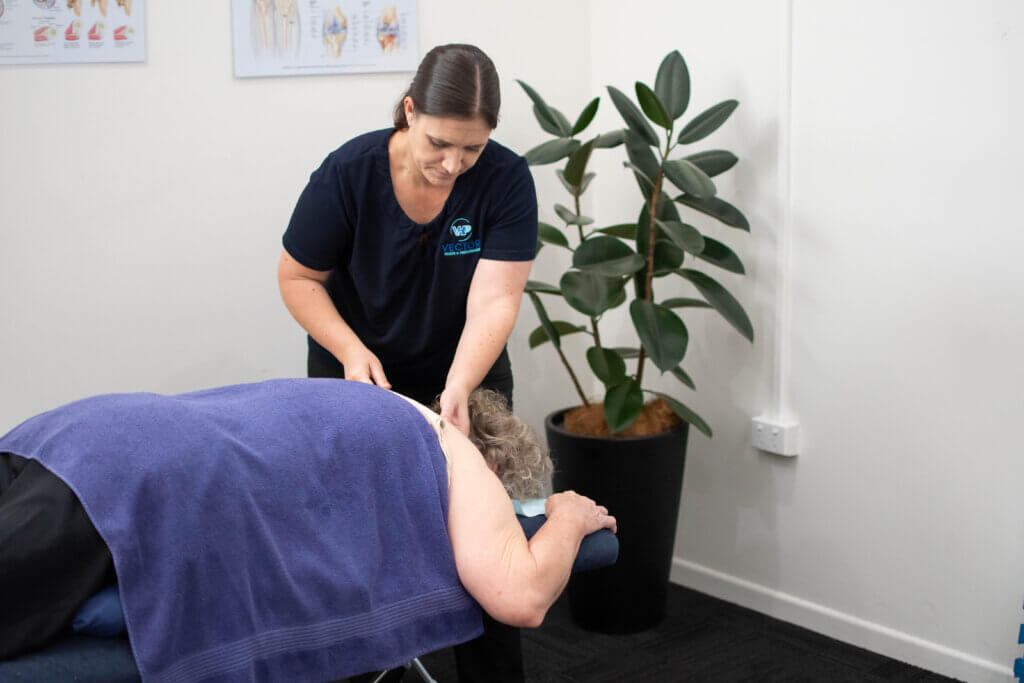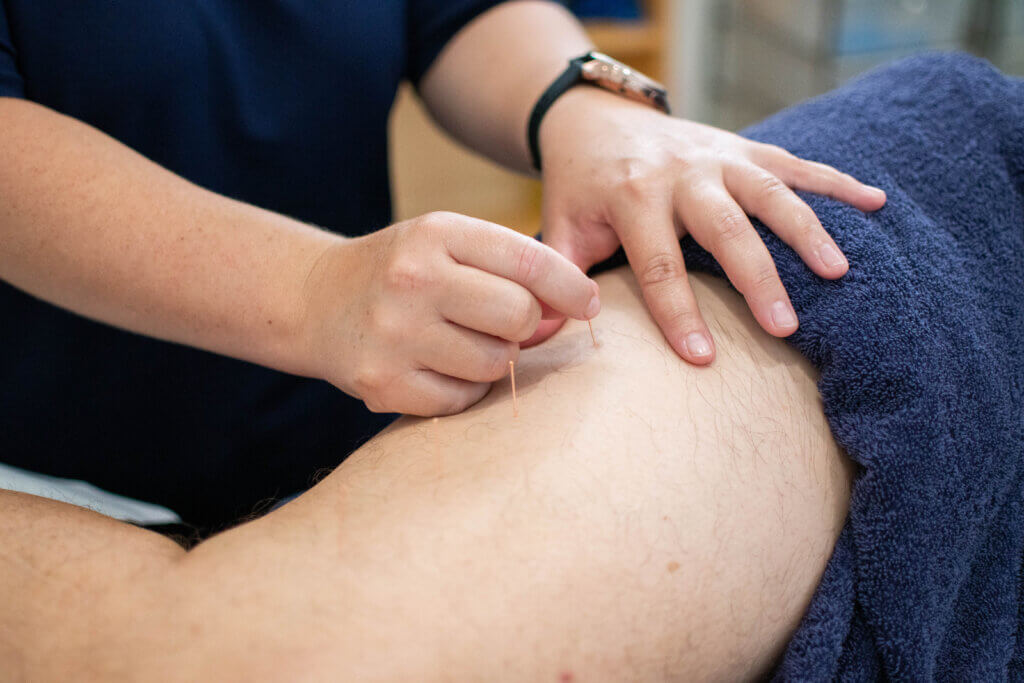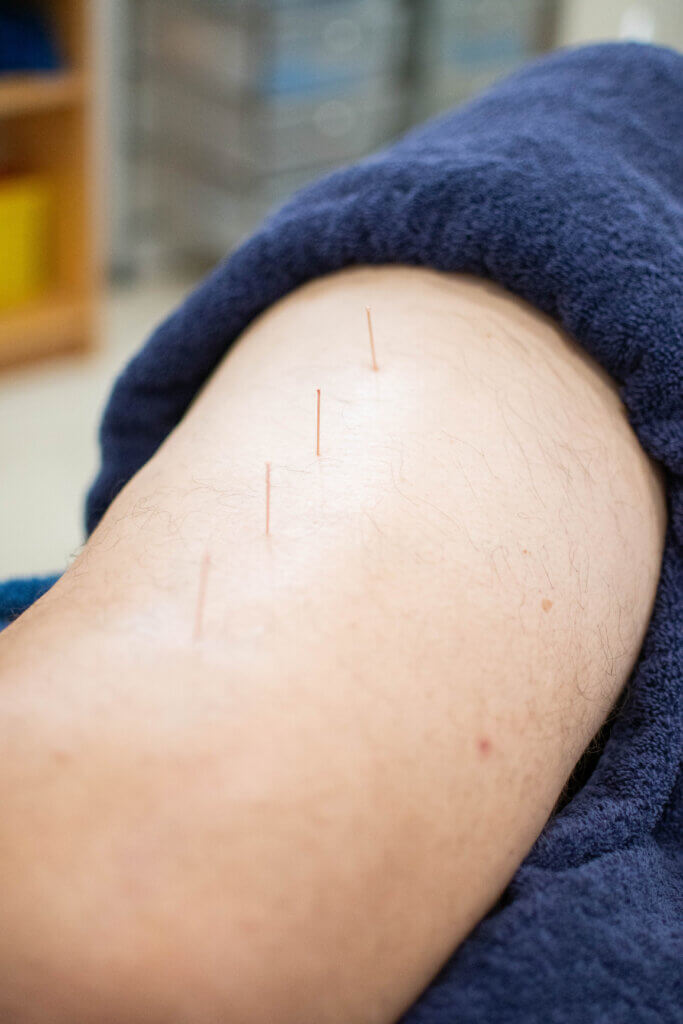What is Dry Needling?
Dry needling is a therapeutic technique in which a thin needle is inserted into specific trigger points in a muscle without the use of medication. These trigger points are localized areas within muscles that can refer pain to other regions of the body, leading to discomfort, weakness, and restricted movement.

Causes of Trigger Points:
Trigger points can develop due to various factors, including:
Sustained Posture: Maintaining the same position for extended periods can strain muscles.
Repetitive Low-Load Stress: Repeating the same movements or actions can lead to muscle fatigue and trigger points.
Unaccustomed Muscle Loading: Sudden increases in physical activity or new exercises can stress muscles in unfamiliar ways.

Expected Outcomes of Dry Needling
The benefits of dry needling can include:
Decreased Muscle Tone: Relaxation of tight muscles.
Pain Reduction: Alleviation of pain associated with trigger points.
Increased Range of Motion: Improved flexibility and movement in the affected area.
Higher Pressure Pain Threshold: Enhanced ability to tolerate pain.

What to Expect During a Session
Assessment: The therapist evaluates your condition to identify the appropriate trigger points for treatment.
Needle Insertion:
After disinfecting the skin, the therapist inserts a needle into the trigger point.
You may feel a brief pinprick sensation as the needle penetrates the skin.
Deeper insertion into the muscle may cause an involuntary muscle twitch or cramp, which is a normal response.
Physiological Reactions:
Local Twitch Response: The muscle may twitch involuntarily, indicating that the trigger point has been engaged.
Increased Blood Flow: The technique enhances circulation to the affected muscle, promoting oxygenation and healing.
Neurological Effects: Changes in pain perception may occur, leading to decreased sensitivity to pain.
Autonomic Nervous System Reactions: Some patients may experience various emotional or physical responses, including feelings of happiness, tears, sweating, or chills.
Post-Session Effects:
Bruising: It is common to have some bruising at the needle insertion site.
Fainting: A very small percentage of patients may faint during or after treatment.
Risks and Precautions
Punctured Lung Risk: Dry needling in areas such as the shoulder, neck, or chest carries a rare risk of puncturing the lung. Symptoms of a punctured lung include:
Increasing shortness of breath
Sharp pain when breathing in
Blue-ish discoloration of the lips
If you experience these symptoms, seek immediate medical attention.

Conclusion
Dry needling can be a highly effective treatment for various acute and chronic conditions, including headaches and rehabilitation from injuries. When combined with other therapeutic modalities, it enhances overall treatment effectiveness. Always consult with a qualified therapist to ensure safe and appropriate use of this technique.
Written by Bianca Dwyer – Physiotherapist
